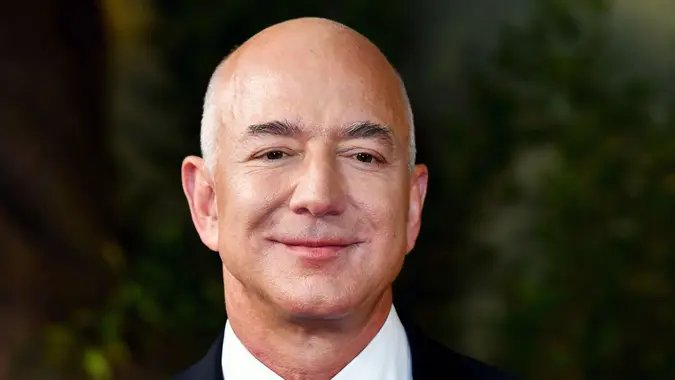I Got Caught in a Debt Spiral: Escaping Wasn’t Easy, but Here’s How I Did It

Commitment to Our Readers
GOBankingRates' editorial team is committed to bringing you unbiased reviews and information. We use data-driven methodologies to evaluate financial products and services - our reviews and ratings are not influenced by advertisers. You can read more about our editorial guidelines and our products and services review methodology.

20 Years
Helping You Live Richer

Reviewed
by Experts

Trusted by
Millions of Readers
A debt spiral is when you continue to fall deeper and deeper into debt despite staying current on your payments, according to Experian. This could happen when the interest on your debt is growing faster than you can repay it or when you unexpectedly lose your source(s) of income.
We interviewed Alejandra Rojas, a trauma-informed finance professional and founder of The Money Mindset Hub, who supports women entrepreneurs in overcoming financial trauma. Here is how she was able to escape a debt spiral and transform her financial health.
Recognize the Debt Spiral
Being in a debt spiral is extremely stressful, and it can feel like everything is spinning out of control.
“The moment I realized I was in significant debt and needed to act was when I was already in a state of financial burnout. Although I was in the finance industry, I was neglecting the tools we use to stop this spiral (which is more common than you might think),” Rojas wrote in an email.
She believes financial trauma was what contributed to her falling into a debt spiral, and it wasn’t until her health suffered that she had a wake-up call.
“When my health suffered, it was even more challenging to change the situation, which made things even more difficult,” she added.
Financial trauma, a term recently coined by Galen Buckwalter, PhD, a psychological research scientist, describes the feelings of stress, anger, fear and anxiousness that people have toward their financial obligations. Financial trauma could stem from experiencing generational poverty and seeing your loved one’s unhealthy relationships with money.
Realize the Importance of a Healthy Money Mindset
Rojas said that the tools that helped her escape from the debt spiral are the same ones that she teaches now, and they go beyond financial literacy to mental strategies.
“To break the debt spiral, you must first make a mindset shift by changing perspectives, developing new habits and reevaluating how you approach money — like prioritizing short vs. long-term satisfaction and planning for the future,” she said. “Without this mindset shift, the cycle often continues.”
For Rojas, emotional resolution was critical to her journey toward debt freedom and what initiated her interest in a trauma-informed approach in her money mindset coaching business today.
“Debt is emotionally charged: at first, it’s exciting, but it can quickly lead to anxiety, guilt and shame. Without addressing these emotions, breaking the cycle becomes much harder because they shape perspectives and strategies,” she explained.
Once Rojas was able to recognize these emotions and shift her mindset, she was then able to implement aggressive financial strategies to tackle her debt.
So, if you believe that financial trauma could be the reason you’re experiencing money issues today, consider speaking with a mental health professional or financial therapist to help you identify the underlying issues that may be negatively affecting your finances.
Implement Strategies for Breaking the Debt Spiral
Rojas implemented the following strategies to dig herself out of the pile of debt she was in and get her finances back on track.
1. Set Motivating Goals
When you’re buried in debt, climbing out of it can feel overwhelming, like trying to swim against a relentless tide; however, Roja believes that if you set your sights on something worth striving for, the journey becomes less tedious.
“I developed a weekly money plan with one overarching goal to motivate me — in my case, it was to make a big trip around the world,” she said.
To achieve this goal, Rojas knew she had to shift her daily habits. So, instead of going out frequently like she used to, she made a conscious decision to spend more time at home and learn how to cook her own meals.
“I didn’t feel restricted because I knew I was one step closer to my goal of traveling the world,” she added.
2. Cut Expenses and Save
Rojas knew that getting out of a debt spiral would be impossible if she was spending more than she was saving.
“So, I started stashing money away while paying off debt, which helped me feel in control of my finances. I also cut up my credit cards and removed them from any subscriptions, so I’m not tempted to overspend,” she shared. “This helped me significantly when breaking the debt spiral.”
3. Have Open Financial Conversations and Clarify Goals
Another strategy that helped Rojas free herself from the debt spiral was learning how to have open discussions about money and clarifying what she wanted from her finances. This could mean reviewing your budget with your spouse or family members to assess spending patterns and identify areas for improvement. It could also mean writing down your thoughts and feelings about money to identify any limiting beliefs.
“This practice, known as understanding your money story, allowed me to stay intentional,” said Rojas.
More From GOBankingRates
- Nearly 1 in 3 Americans Hit by a Costly Holiday Scam, Norton Survey Shows -- How To Avoid This
- Here's What the Average Social Security Payment Will Be in Winter 2025
- How Middle-Class Earners Are Quietly Becoming Millionaires -- and How You Can, Too
- The Easiest Way to Score $250 for Things You Already Do
 Written by
Written by  Edited by
Edited by 
























